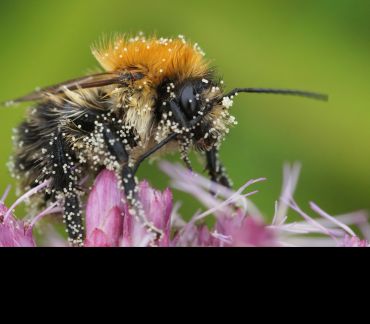New research from the Universities of Oxford and Exeter has revealed that plant species recommended as ‘pollinator friendly’* in Europe begin flowering up to a month too late in the spring to effectively contribute to wild bee conservation. This ‘hungry gap’ results in low colony survival, however enhancing existing hedgerows with early blooming species could be an effective strategy to combat this. The findings have been published in the journal Insect Conservation and Diversity.
The study is the first time that research has quantified the decline in wild bee colony survival and queen production due to a shortage of early season food. The findings demonstrate that pollen and nectar availability during the early colony founding stage is a critical, and previously under-appreciated, factor in bee colony success.
The study looked at two example European species: the buff-tailed bumblebee (Bombus terrestrisi) and the common carder bee (B. pascuorum). These were assessed using the BEE-STEWARD model, which integrates data and runs simulations to predict how changes in different factors may impact bee populations over time. The researchers explored when during the year bumblebee food (pollen and nectar) demand is highest, how colony survival is impacted by periods of food scarcity, how food requirements relate to seasonal changes in colony composition (numbers of adults, eggs, larvae, and pupae), and how availability of early spring-blooming plants affects colony survival and queen production.

